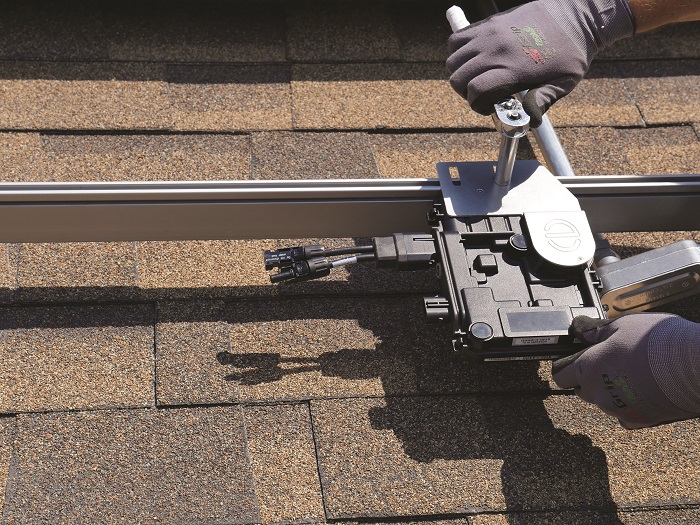California-headquartered microinverter specialist Enphase Energy has today announced the launch of its new IQ microinverter that the company claims can be a game-changer for the residential solar industry.
First unveiled at the Solar Power International exhibition last September, the IQ microinverter improves upon Enphase’s previous iteration – the S-series microinverter – in a handful of ways. Firstly, it is 30% lighter and thus easier to install. This is achieved via the use of a double-insulated non-corroding polymeric enclosure that has enabled Enphase to reduce its size.
Inside the enclosure is a new two-wire Q cable that utilizes 50% less copper, helping to bring down weight and shore-up the IQ’s safety and reliability. As with previous Enphase microinverters, the new IQ is both NEC 2014 and 2017 compliant, meaning that it meets the rapid shutdown requirements of the U.S. National Electrical Code (NEC) as well as individual states’ own demands – including Rule 21 in California and the Hawaiian Electric Company Rule 14H (which stipulates certain standards pertaining to power factor, voltage and frequency regulation).
However, perhaps the most interesting upgrade inherent in the IQ is its integration possibilities. This new Enphase microinverter underpins the firm’s Energized AC Modules, which are smart solar modules shipped with the IQ Microinverter pre-installed. These modules will be available in the U.S. this summer via leading brands, incuding LG, SolarWorld and JinkoSolar.
Demand for AC modules is expected to grow strongly over the next few years because they offer higher power output, simplified installation, lower capital costs and a streamlined supply chain as the MLPE (module-level power electronics) functionality is installed at the production stage.
“Our IQ technology will enable the introduction of Enphase Energized AC Modules, which will be the ultimate game-changer for the residential solar industry,” said Enphase CEO Paul Nahi.
This content is protected by copyright and may not be reused. If you want to cooperate with us and would like to reuse some of our content, please contact: editors@pv-magazine.com.








I am disappointed to see that the 60 cell version maxes out at 240 watts (if I read the specs correctly). I have 300 watt panels and 250 watt Enphase microinverters and I am always discourage when I see them limited to 250 watts in the middle of the day, knowing that the panels are pumping out an additional 50 watts each.